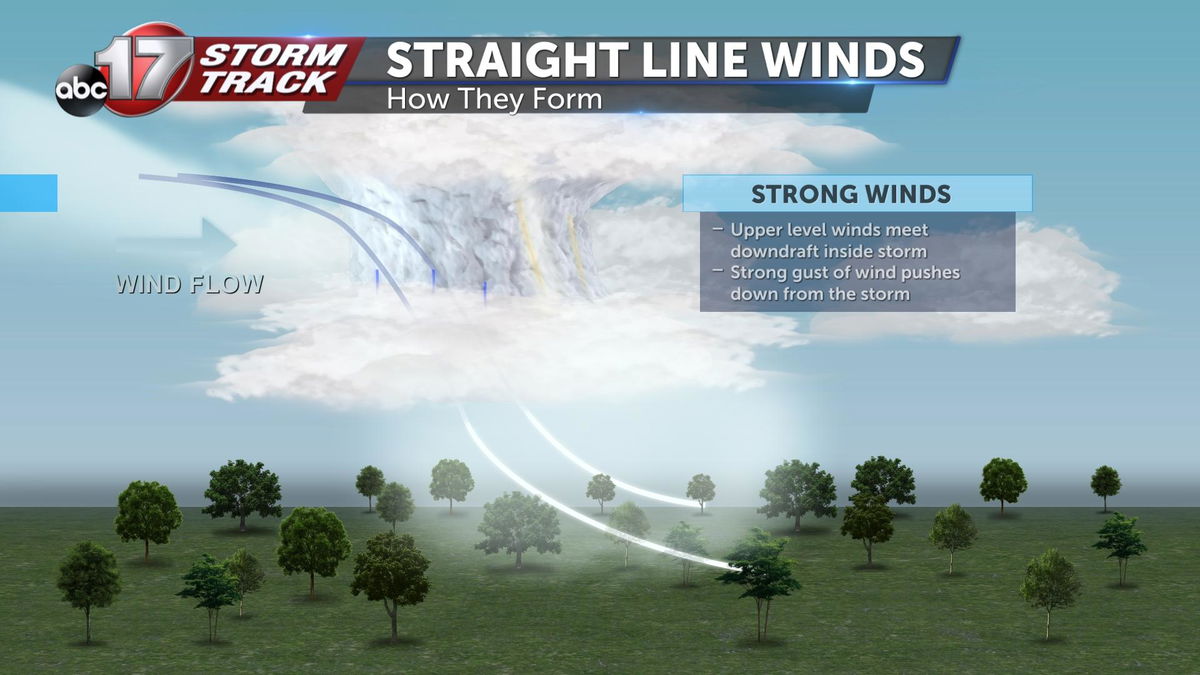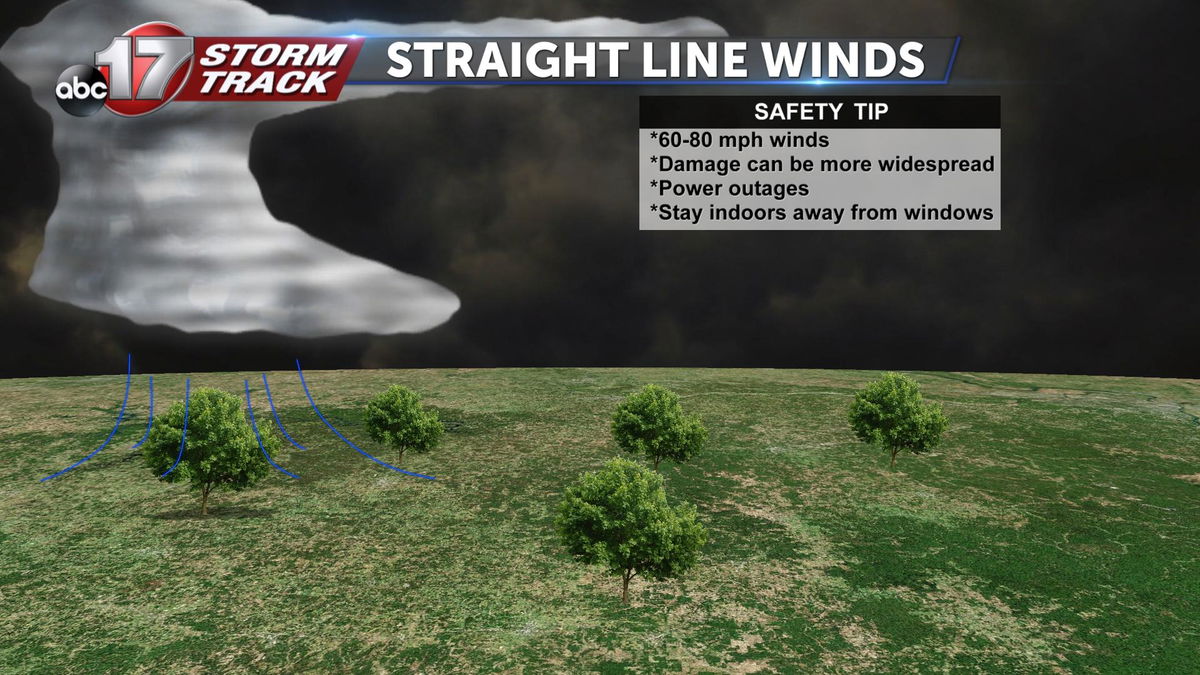The science behind downburst/ straight line winds
When many people think of storms and damaging winds, their minds might automatically turn the thought of tornadoes. However, the majority of damaging winds comes from straight line winds and localized microburst events.

Straight line winds form as warm air ahead of the storm creates an updraft pulling up into the core of the storm system. Eventually these rising air parcels (groups of air segments) will begin to cool causing a downdraft. This downdraft will force upper level winds travelling parallel to the surface of the earth to be forced downward increasing wind speeds. These winds combined with the downdraft will then race out and ahead of the initial storm cells.

This racing of winds ahead of the storm system will create what is often referred to as a gust front. These winds are cooler and meet the warmer air sector allowing those on the ground to feel a strong and cool sudden push of air.

Straight lines winds are known for causing widespread damage and can exceed 60 MPH. Many times, straight line wind damage is confused with tornado damage. A signature tell tale of straight line winds is looking at trees or standing vegetation and seeing if they are pushed or broken over all facing one direction. If the directions vary and trees are twisted, then there is increased chances the damage was caused by a tornado.

On a smaller scale of downburst wind damage, microburst are known to be very explosive. Microburst are equal to or less than 2.5 miles wide and can reach up to 100 MPH at times. This occurs similar to the process of straight line winds, but the main difference is the updraft will decrease in the core of the storm. When this happens heavy hail and rainfall being suspended is then forced downward forcing surrounding cooler air to race out of the storm back to the surface of the earth.
